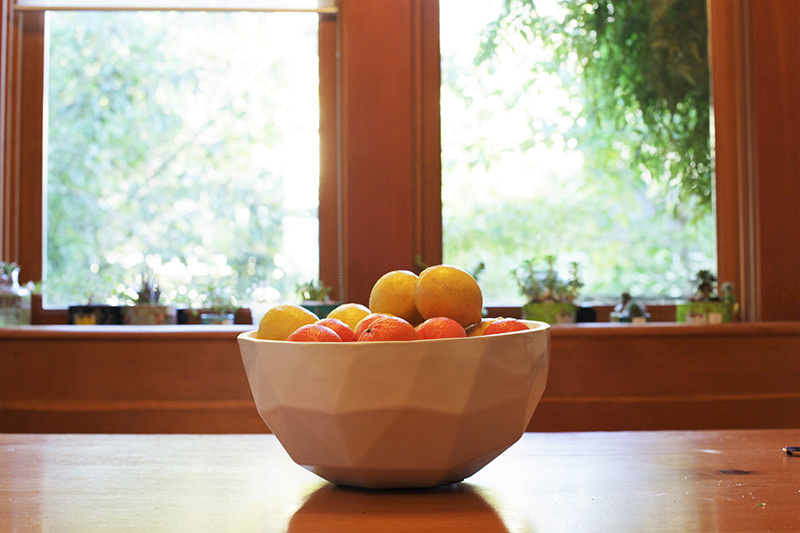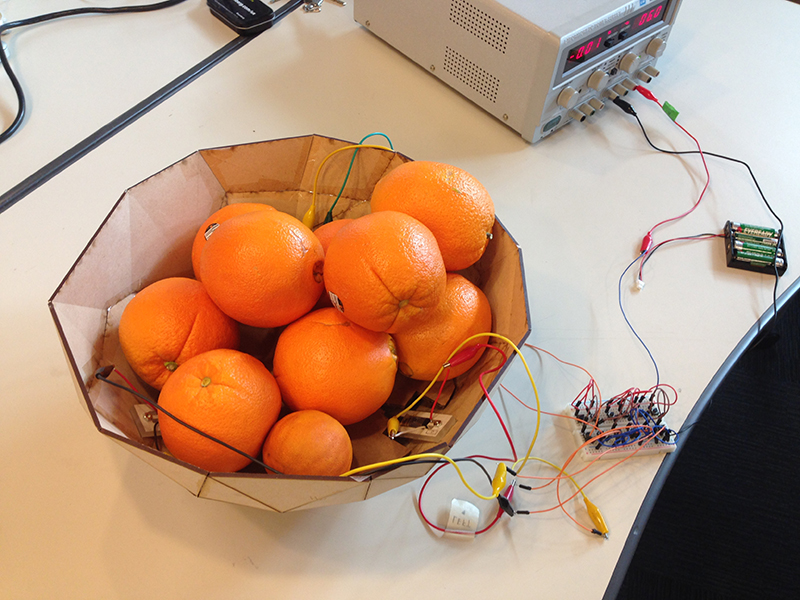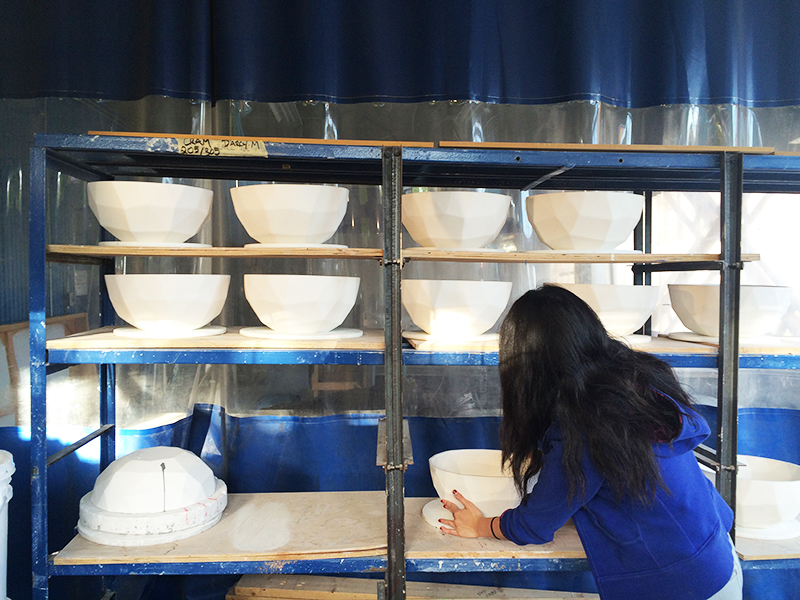The tilting bowl is an artifact that was imagined following our studies of everyday design and our reflections on how interactive artifacts become part (or not) of people's homes. The goal was to create an interactive artifact that can be lived-with over time and that reaches a balance between being too alien and too familiar (as described in our conceptual construct of Unselfconscious Interaction).

The bowl was firstly designed through a parametric 3d modeling software (123D Make) to create the facets, and further refined in Rhino. We used laser cut 1/8 inch mdf to test out the shape, scale and first electronics.

We explored a variety of movement range and timings to reach an ideal balance where the movement is subtle but still remarkable.
A series of bowls were slip casted by our collaborators at Emily Carr.


Project in collaboration with Ron Wakkary, Xiao Zhang, and Henry Lin from the EDS studio at SFU and the folks from the PMP lab at Emily Carr.
_ Wakkary, R., Lin, H., Mortimer, S., Low, L., Desjardins, A., Doyle, K., and Robbins, P. (2016).
Productive Frictions: Moving from Digital to Material Prototyping and Low-Volume Production for Design Research, In Proc. DIS 2016, New York, ACM Press, (in press), 12 pages. (acceptance rate 26%).
For more on Unselfsconscious interaction:
_ Wakkary, R., Desjardins, A., Hauser, S. (2015).
Unselfconscious Interaction: A Conceptual Construct, Interacting with Computers, July 17, 2015, iwv018. 1-20.